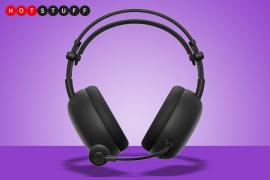These must-have features just made the Razer Blackshark V3 Pro my new go-to gaming headset
Can noise cancelling and console-friendly connectivity elevate an already ace headset?
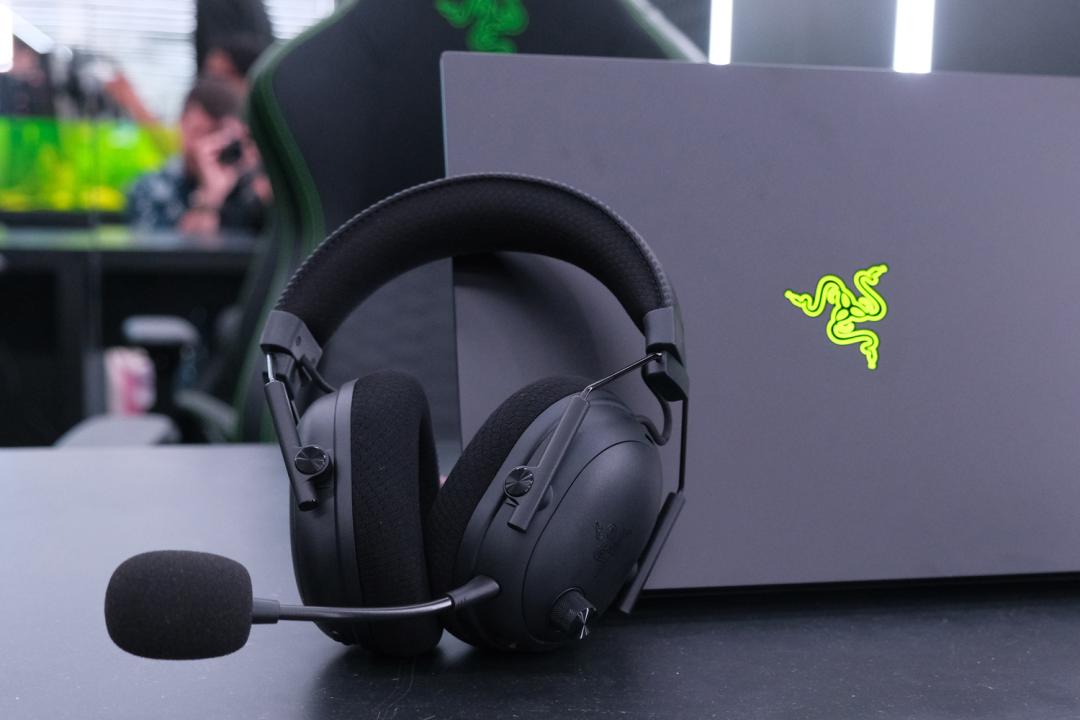
Stuff Verdict
This ever-popular gaming headset is even more capable in its third generation. The Blackshark V3 Pro sounds stellar, has great connectivity, and adds effective ANC to the mix.
Pros
- Familiar design is as comfortable as ever, while still evolving functionality
- Punchy and precise audio meets crystal clear mic quality
- Wired connections make a welcome return for those who need them
Cons
- No high quality Bluetooth codecs
- You pay a premium for the uprated speaker drivers and mic
Introduction
Razer’s esports-grade gaming headset has been around for over a decade now, through multiple iterations. In that time the Blackshark has become a pro player staple, and slowly evolved from a purely PC focus in order to bring console owners into the fold. This latest edition includes console support from the off, along with active noise cancellation for the first time. Plus it rights a few of the last-gen model’s perceived wrongs.
The Blackshark V3 Pro is the headline-grabbing hero model, with copious connectivity, lag-free wireless and a broadcast-grade boom mic – but then at $250/£250/€270, you’d rightly expect it to have the best tech going. It’s joined by the cheaper Blackshark V3 and V3 X Hyperspeed, which forego some of the fancier features to hit a far more appealing price point. Does the Pro do enough to earn its place at the top of the tree?
How we test headphones
Every pair of earphones and headphones reviewed on Stuff is used for a minimum of a week’s worth of daily listening. We use a playlist of test tracks made up of multiple genres to assess sound, and use our years of experience to compare to other models. Manufacturers have no visibility on reviews before they appear online, and we never accept payment to feature products.
Find out more about how we test and rate products.
Design & build: cleared for takeoff
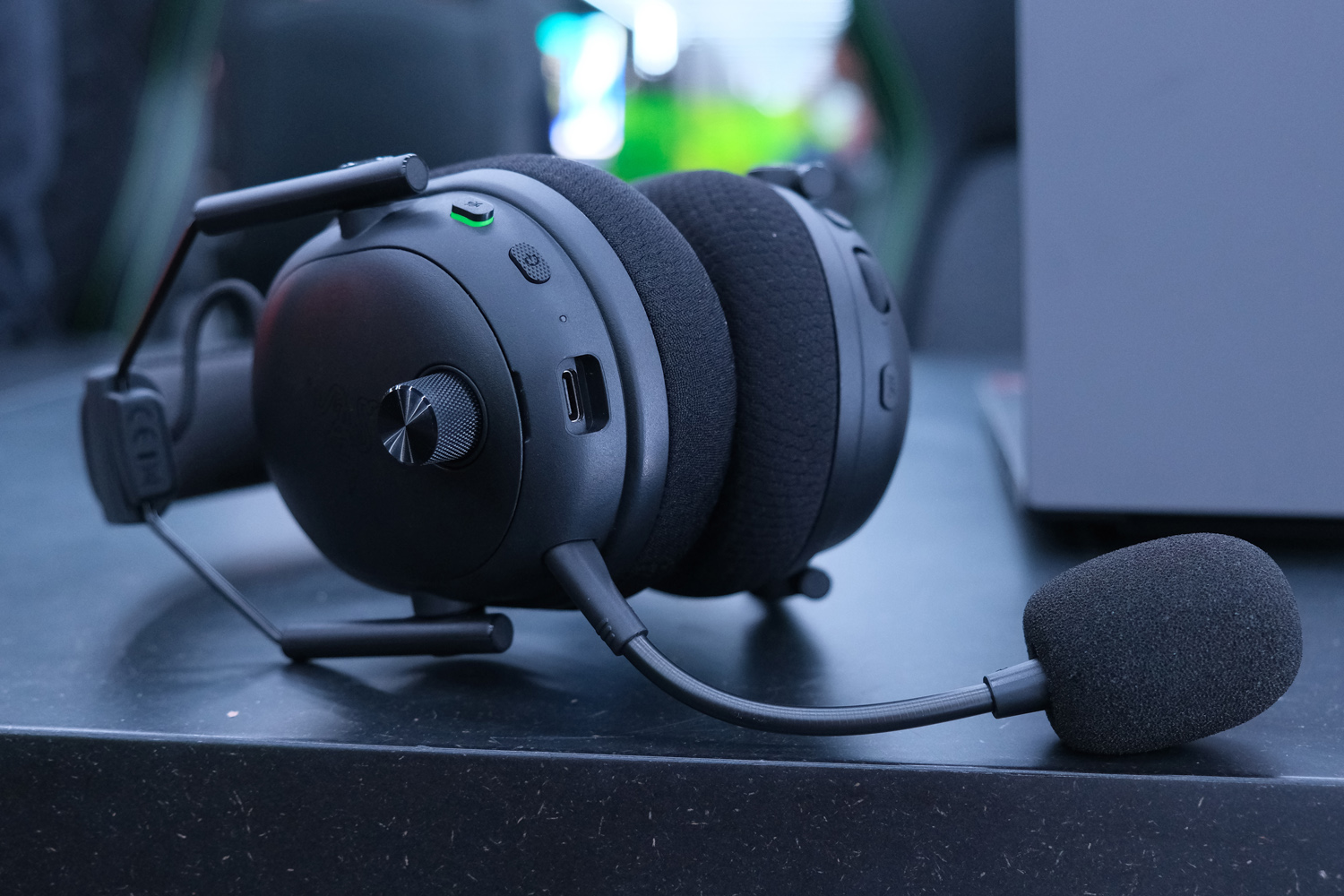
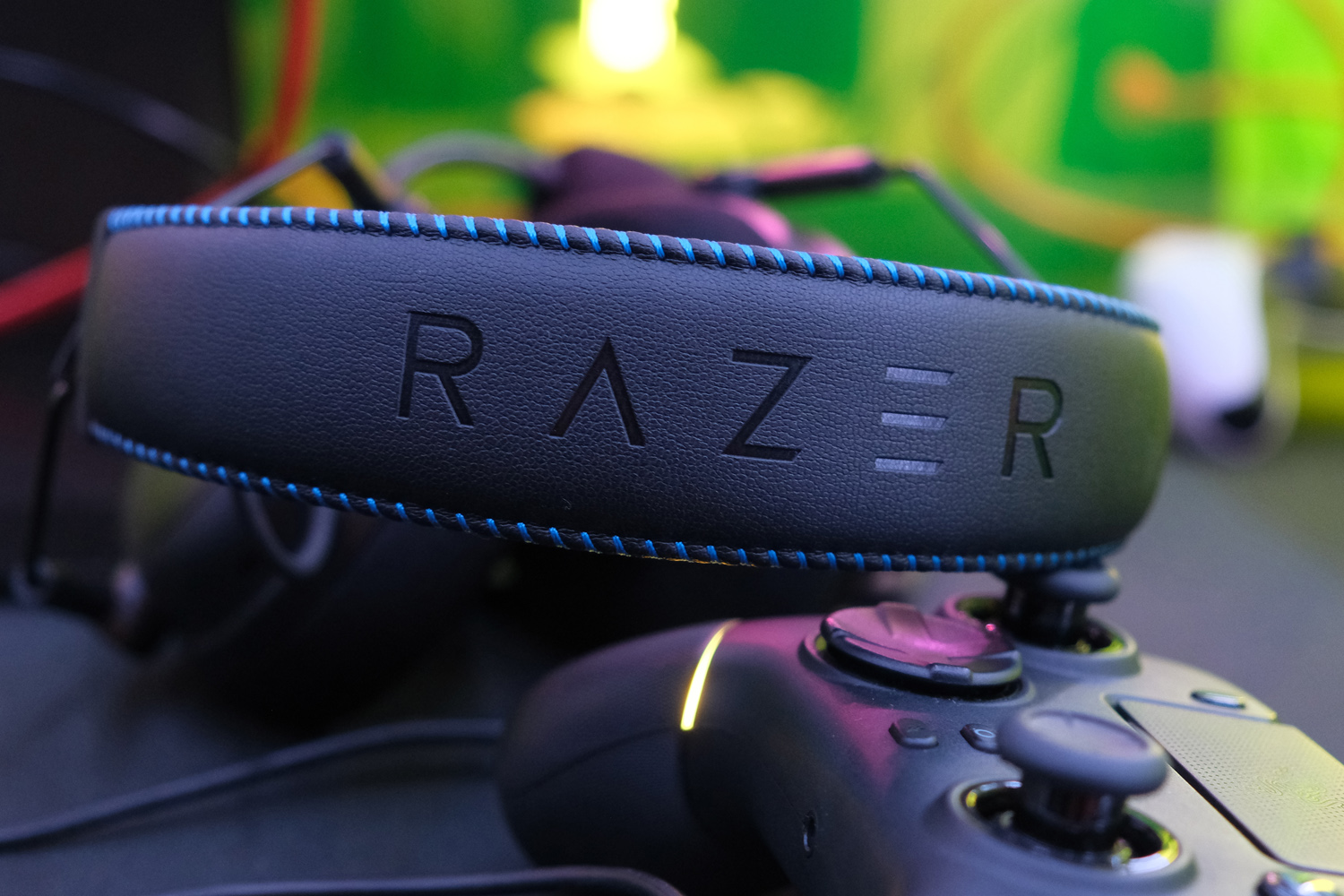
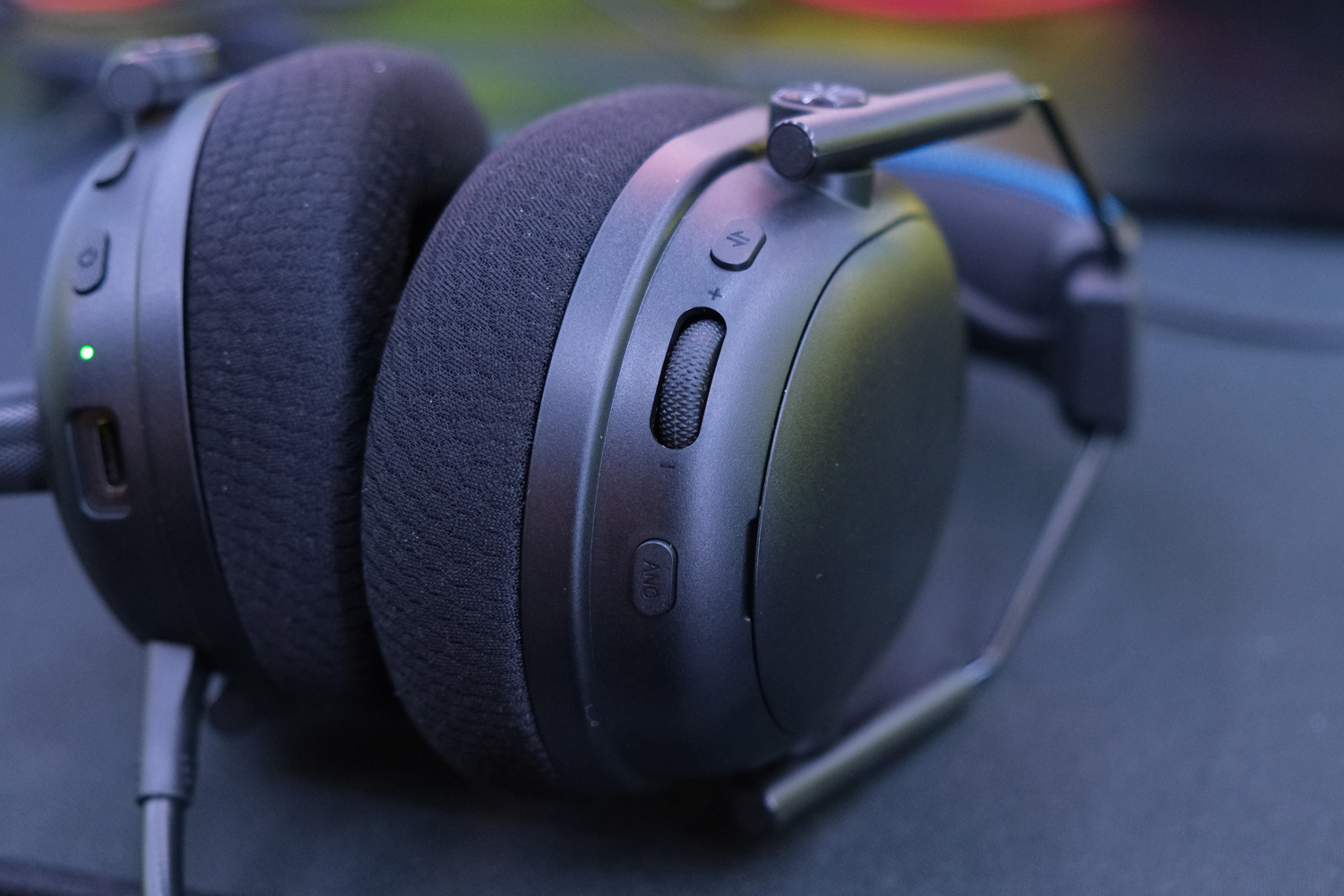
The V3 Pro doesn’t look all that different from the last-gen Blackshark, but that’s a good thing in my book: the old headset evolved Razer’s aviator-style design into something more sleek and modern, and this model continues that trend. It’s still an all-black affair – unless you go for the white version, which is more of a half-way house with its black ear cups and headband, or buy one of the console-specific models. The PlayStation and Xbox flavours get blue and green headband stitching respectively.
Small refinements can be found when you go looking for them: the chunky volume dial on the left ear cup has a textured finish now, which makes it easier to grip. There are more buttons around the edges, but they’re evenly distributed – and the ones you’ll be pressing more are moved far away from the power button to avoid accidental switch offs.
An embossed logo on each earcup is pretty subtle, but given the faceplates are just held on with magnets, it’s a breeze to swap them out for something more colourful. Razer showed me a bunch branded with different esports team logos and mascots, but doesn’t currently have any plans to sell them separately; I’m betting etsy and Aliexpress will quickly fill that void. This design makes it easier to replace the battery, though Razer will still take care of that for you should the need arise.
As with most of its esports-grade peripherals, Razer has eschewed RGB lighting; there’s just a single activity LED, which changes colour when swapping wireless modes. The reinforced metal headband sliders provide plenty of adjustment for different head sizes, and the 15 degrees of swivel helped me find a comfortable fit that didn’t apply an excessive amount of pressure around my ears.
The ear cushions are wrapped in hexagonal weave cloth, but have a leatherette layer underneath that both helps wick away sweat and increases background noise isolation. I’ve happily worn this headset through entire 9-5 working days, then popped it back on after dinner for an evening of gaming without any discomfort. I also like that the boom microphone still detaches easily when you don’t need it. Razer had long sorted any issues with microphone drift with the outgoing Blackshark V2, and I didn’t experience any during testing this new model.
Features & battery: wireless wonder
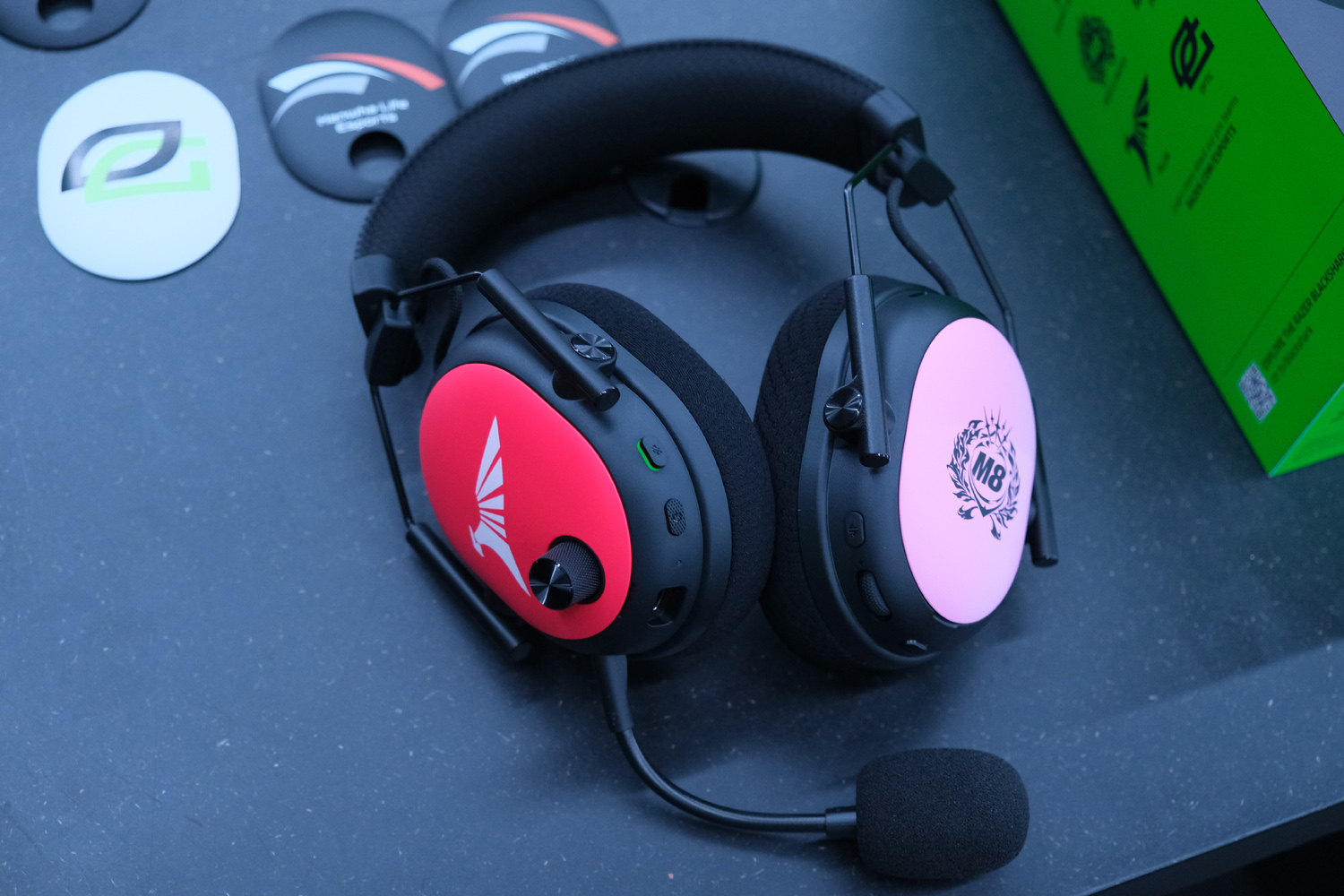
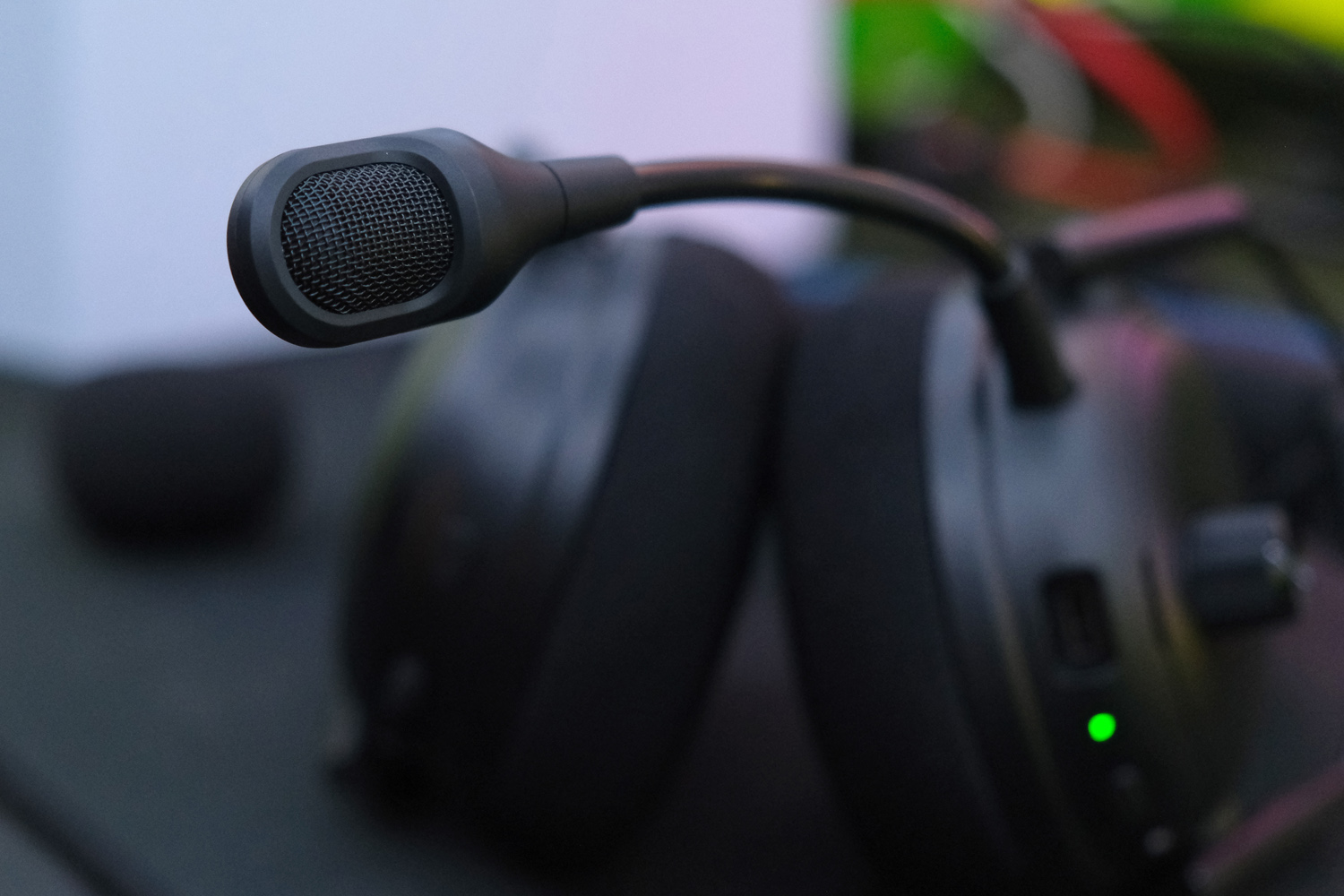
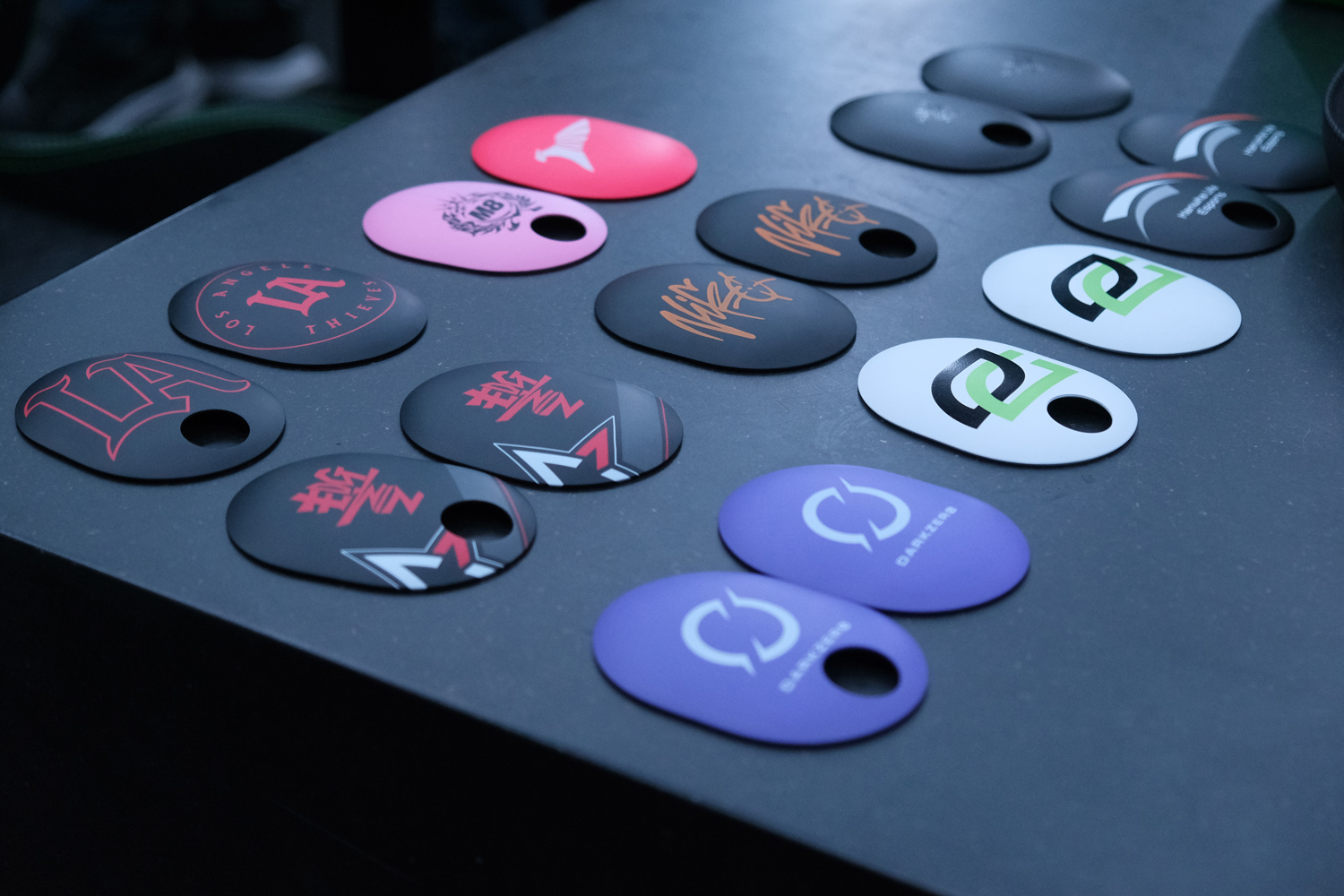
After the last-gen headset going exclusively wireless rankled some corners of the internet, Razer has course-corrected for 2025. The Blackshark V3 Pro still has built-in Bluetooth and includes one of the firm’s Hyperspeed 2.4GHz dongles, but now you can also listen via a cable. You get USB-C and USB to 3.5mm cables in the box, so it should play nicely with just about any gadget.
I can’t say I felt the need to go back to wired play, though. The new Hyperspeed V2 connection is about as close to a cable as it gets, measuring just 10ms of latency – or 5ms faster than the V2 Pro (and virtually any rival) can manage. It’s so low I couldn’t detect any delay between the onscreen action and what I was hearing through the headset. Range was pretty good in my two-storey home, and I didn’t experience any interference from my other wireless gear.
That could partly be to the redesigned dongle now sitting on your desk at the end of a cable rather than plugging directly into your PC or console like a flash drive. It’s still nice and compact, though, not taking up anywhere near as much desk space as the Razer Kraken V4 Pro‘s base station.
You’re not forced to pick between Hyperspeed and Bluetooth anymore, either. A new simultaneous mode lets you hear both sources at once, so you can be connected to voice comms through another device while hearing game audio from your PC. Just keep in mind you’re limited to SBC or AAC Bluetooth – there’s no higher quality codec support. The smart switch button on the right ear cup makes it easy to toggle between the three different modes.
This is also where you’ll find the new configurable roller, which can be set through Razer’s Synapse software to adjust the game/voice chat balance, mic monitoring level, or footstep booster setting. The latter is based on your EQ profile, so you can have different settings for different games. You can save up to nine. The profile switcher button above the roller toggles through each one. I wish the roller could also be pressed in to make selections; that would open it up for full multimedia controls when not in-game, though the power button can do this already with double- and triple-taps.
Battery life can max out at 70 hours with a Hyperspeed connection – but only when you’ve got ANC disabled. It’ll drain faster with noise cancelling switched on. I could get through most of a working week without having to plug in, as my home office doesn’t really call for noise cancelling. A full charge isn’t the fastest, but 15 minutes is usually enough for a full evening of play.
It could still do a better job of warning you when you’re getting low on juice; I often forgot to check the activity LED before putting the headset on, and would miss its 30% warning. You can at least swap the dongle’s LED from connection status to battery status, so it’s always visible even when you’re wearing the headset. It’s also a good reason to download the Razer Audio app; the smartphone companion shows your exact percentage remaining on its homescreen.
Interface: firing all Synapses
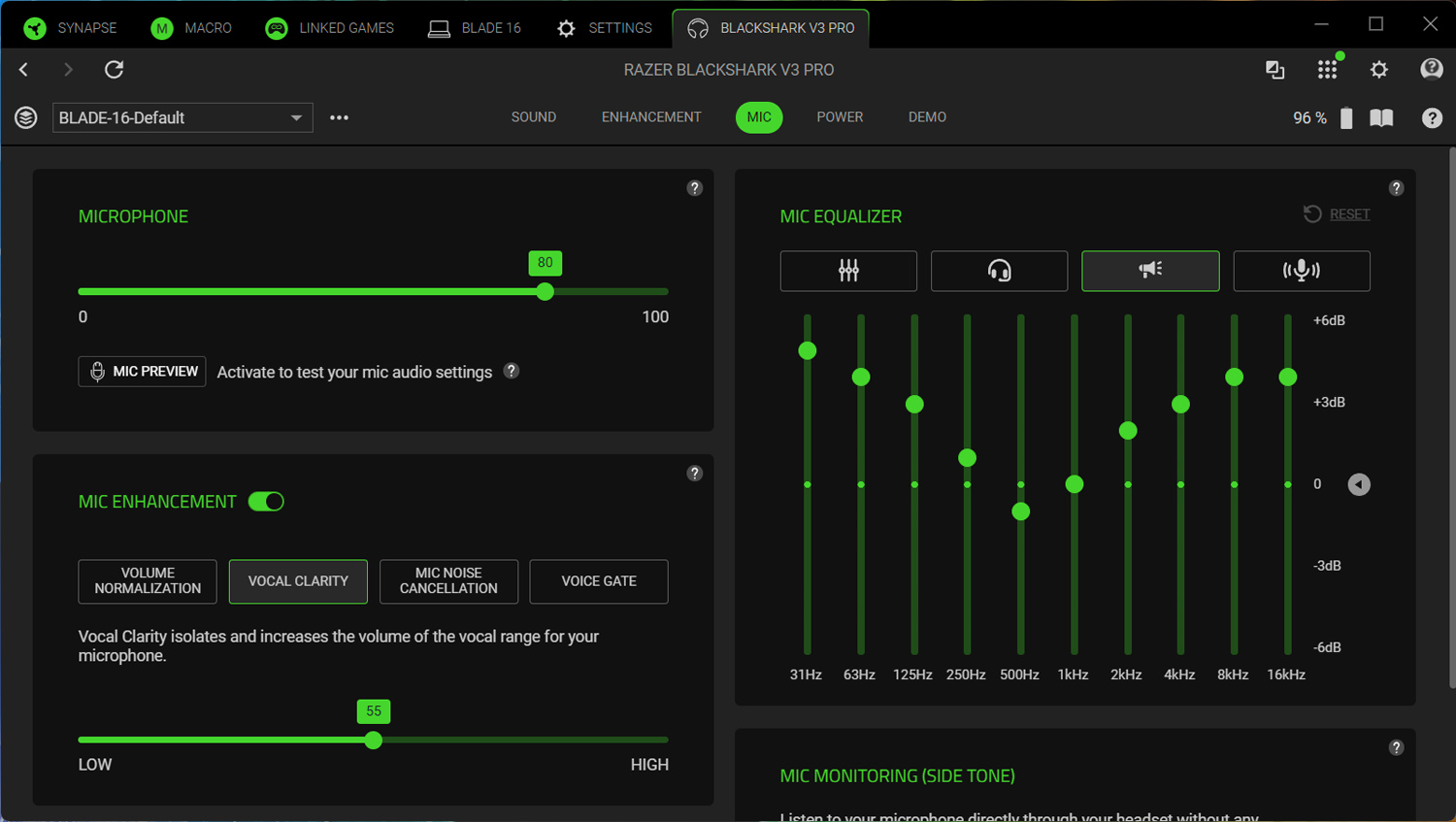
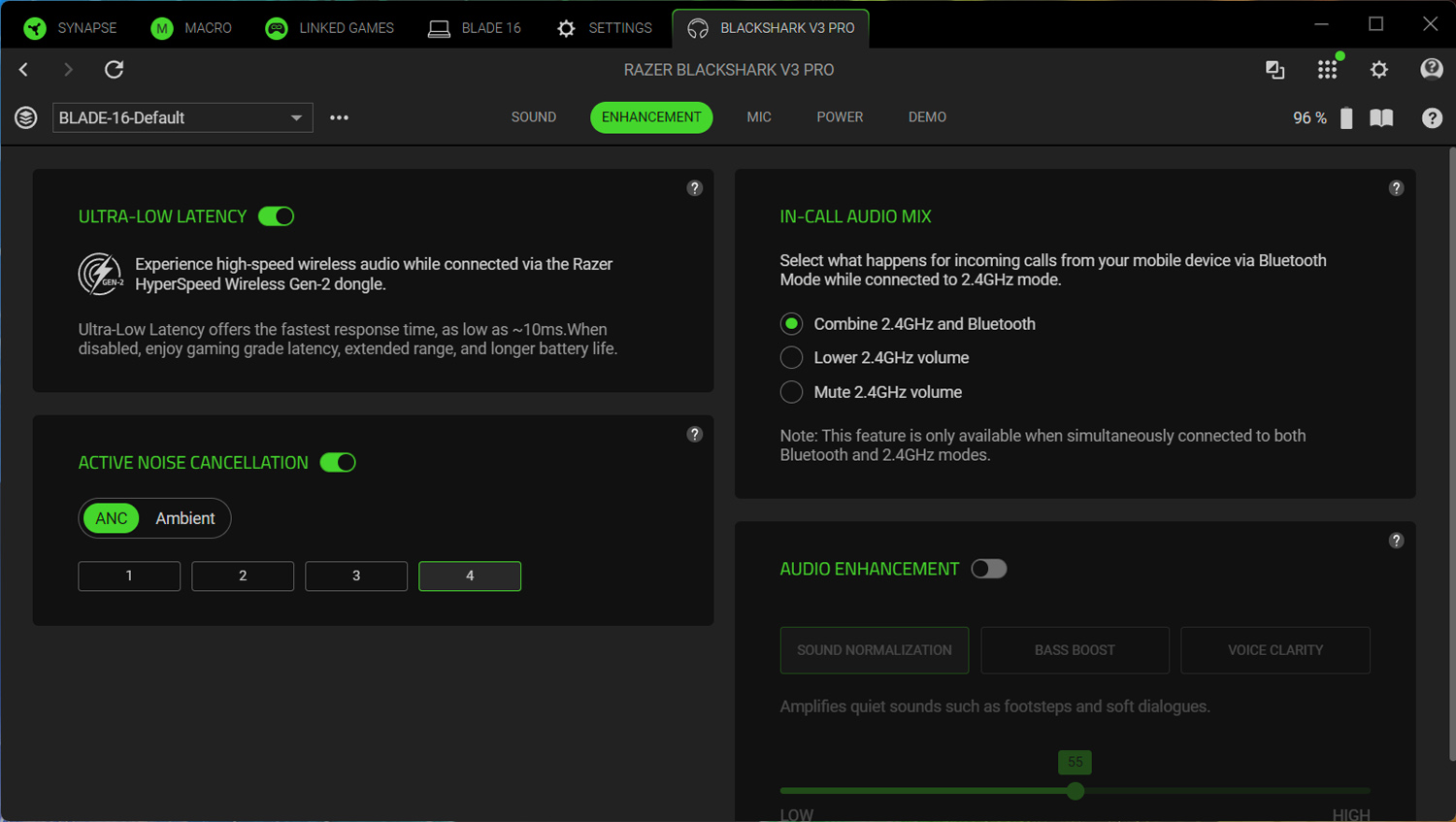
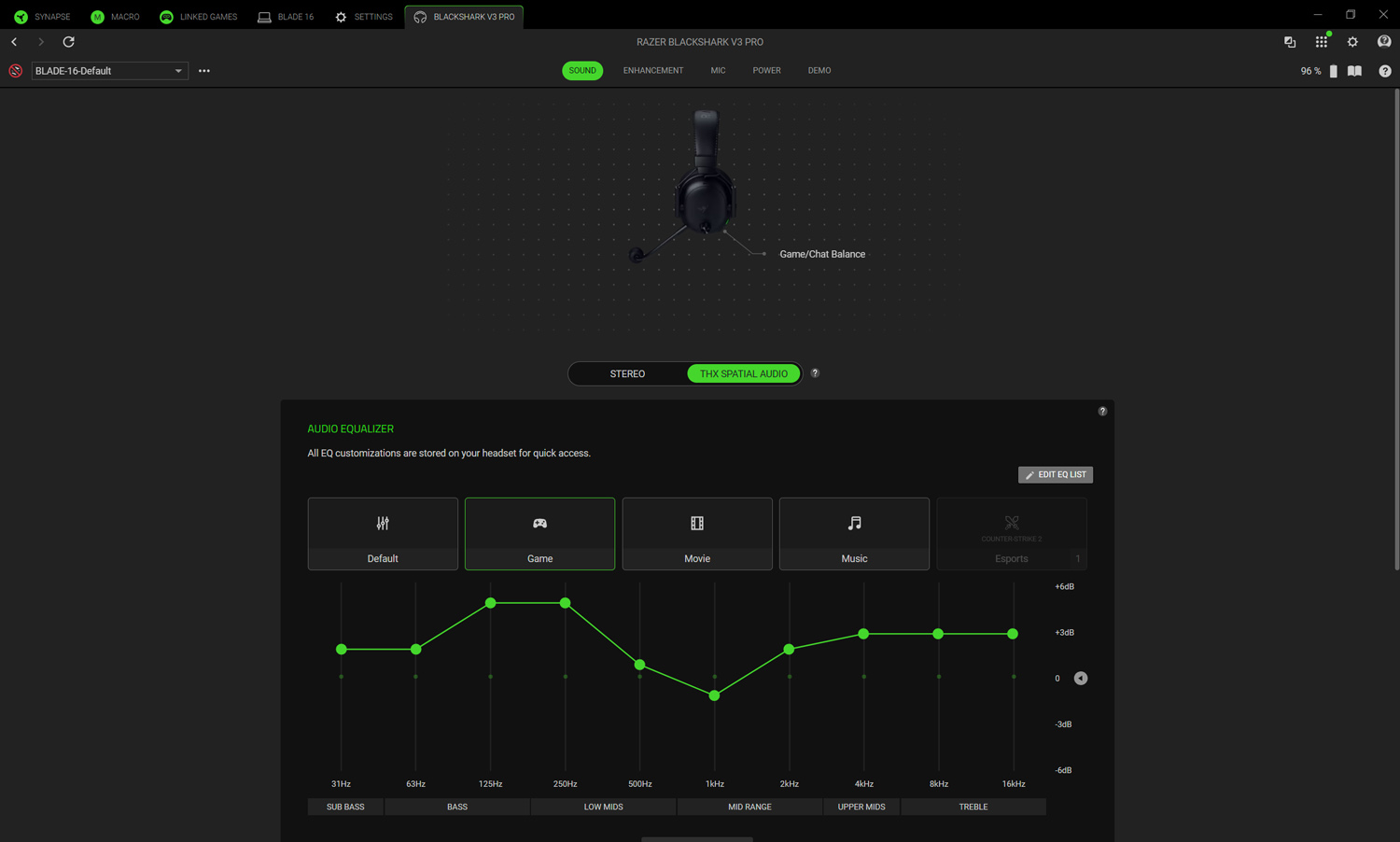
The smartphone app lets you tweak pretty much every setting you’ll find in the Synapse PC software, including the strength of the active noise cancellation, what the roller switch does, and the ultra-low latency 2.4GHz mode (which is on by default). You can also adjust each of the default equaliser presets using a 10-band EQ, push game-specific ones to the headset for titles like Valorant, Call of Duty and Counter Strike, and create your own from scratch. The Razer Headset Setup for Xbox app is a similar deal if you’re gaming on that console.
You’ll still want to install Synapse to enable THX spatial audio on the Blackshark V3 Pro. This does a very convincing impression of 7.1.4 surround sound. I found it just as boomy in EQ profiles other than Game as before, but there’s great separation between objects in front, behind, below and above you in games. It really expands the soundstage, too. The PS5 version plays nicely with 3D Tempest Audio, and the Xbox edition supports Windows Sonic on Xbox.
There’s almost as much adjustment for the microphone, which has a new larger 12mm capsule for clearer audio recording. The four EQ presets include specific modes for esports and broadcasting, the former upping the mid-highs for speech that better cuts through gaming audio, and the latter with warmer, deeper tones for a more studio-like sound.
The 48Hz sampling rate is higher than you’ll find from most headset rivals (though not every game or comms client broadcasts that high), and the internal/external pop filters help prevent plosives. Clarity is a huge improvement over the 16kHz competition. I was seriously impressed with how clear my voice sounded when recording locally, and co-op friends said I was coming through very clearly when playing online.
Sound quality and noise cancelling: detail oriented
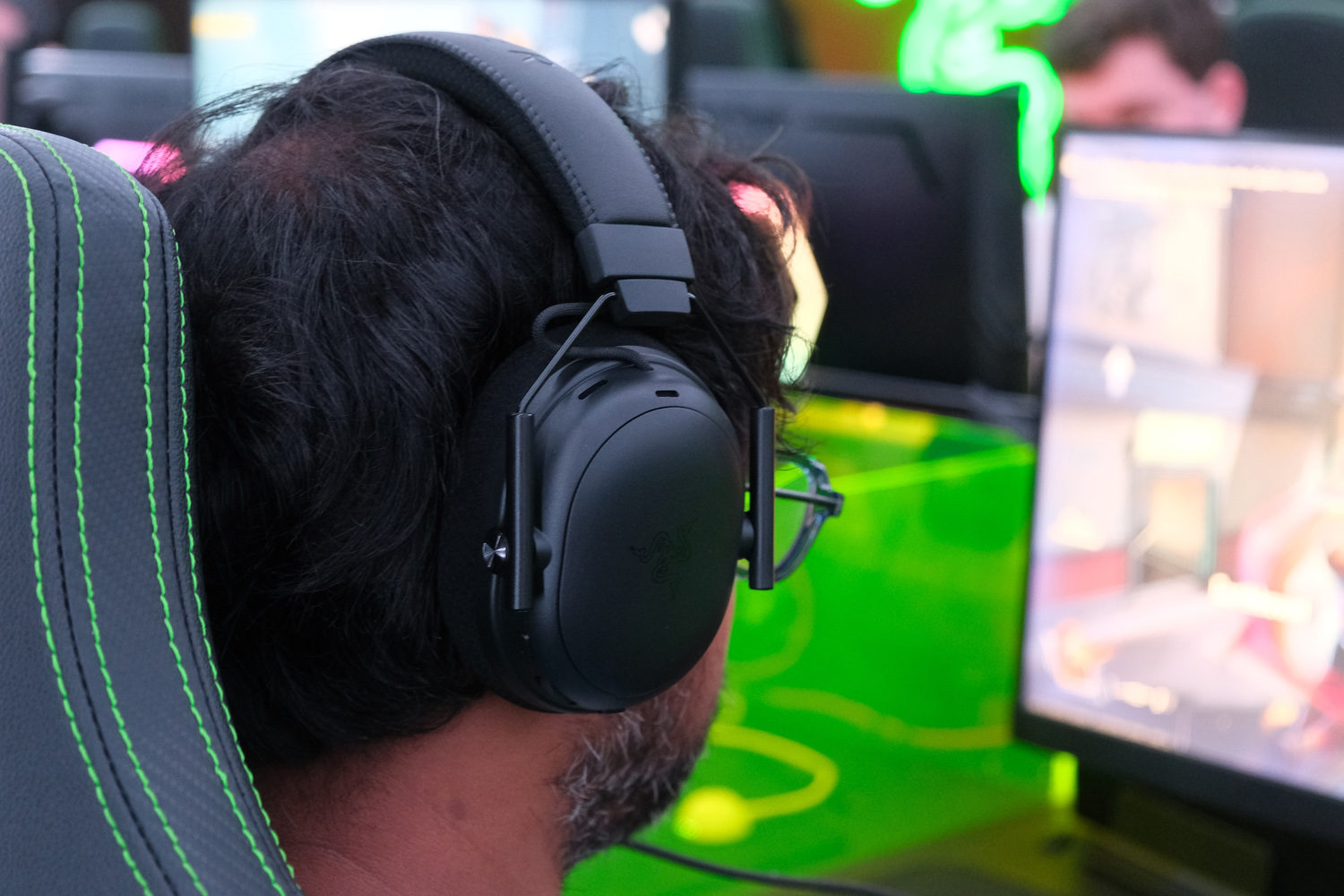
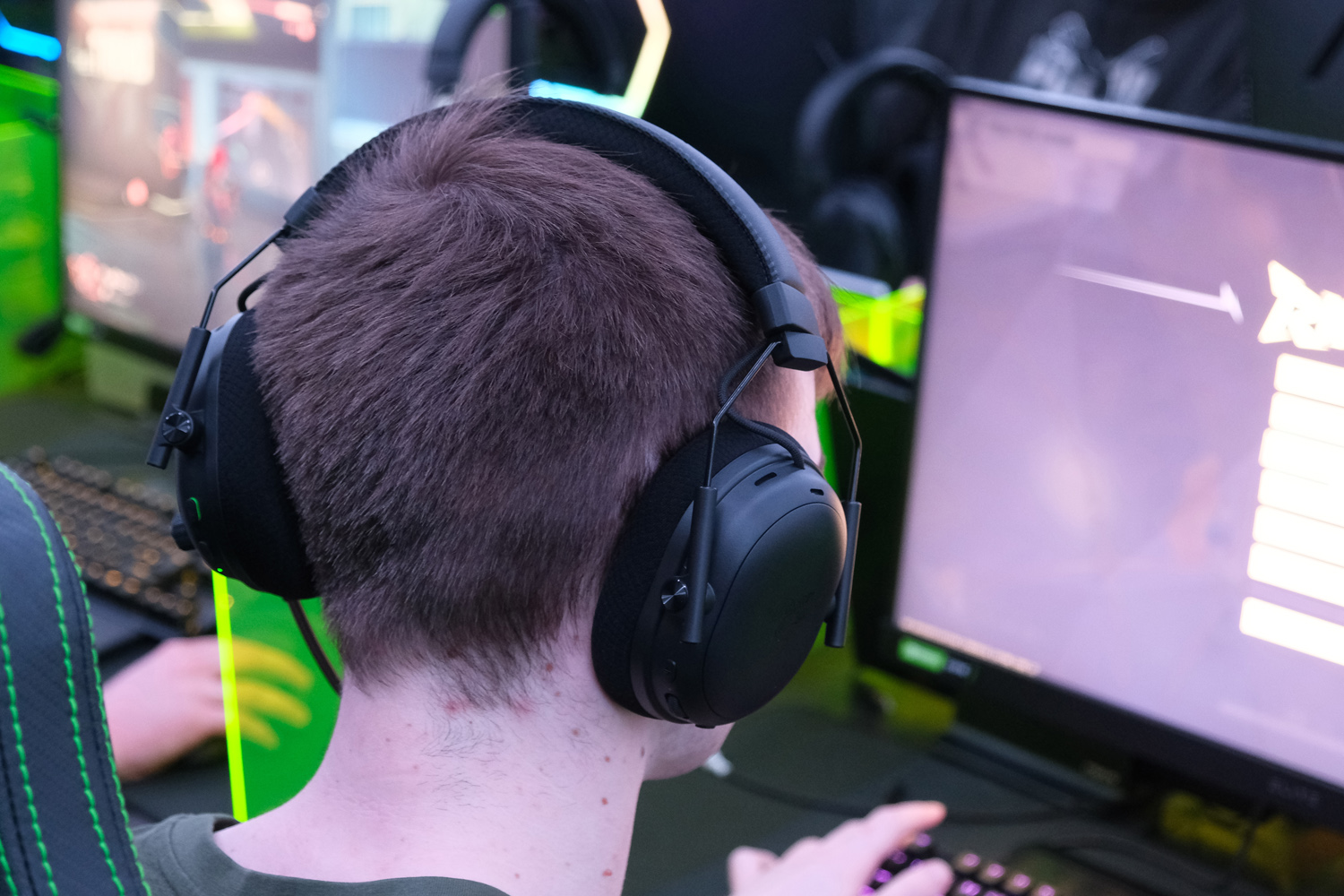
The V3 Pro isn’t Razer’s first gaming headset with active noise cancellation onboard, but the tech has never appeared on a Blackshark before. It uses two mics on each ear – one internal and one external – to strip out a generous amount of background noise, even with the in-game volume set at a moderate level.
These aren’t really the kin of cans you wear outside the house, so heavily trafficked roads and public transport aren’t the best test case for them – though I still gave it a go. They don’t have the nuance of the best mainstream ANC headphones when it comes to sudden loud sounds, and the noise floor in general was higher than the likes of Bose or Sony, but for gaming headphones they put in a fantastic showing.
Back at home, I could still make out the clack of my mechanical keyboard – but the ANC was far more effective than any pair of passively isolating headphones, including the Logitech G Pro X 2 I normally use. They have the edge over the few gaming headsets I’ve tried with ANC, too.
On the audio side, the Blackshark V3 Pro gets the latest version of Razer’s 50mm dynamic drivers. They’re larger than the 40mm ones found in the Kraken V4 Pro, and get new driver plugs that halve harmonic distortion compared to the outgoing Blackshark V2. They still use bio-cellulose diaphragms, which are super thin to help separate frequencies, but the magnets are stronger now.
The result is a crisp and clean-sounding headset that really lets fine details shine through while gaming – but one that doesn’t sound overly sharp or shrill, regardless of EQ mode. I found this high-end brilliance helped me pick out subtle positional clues like breaking glass or quiet footsteps that bit easier than with the old headset.
These are still gaming headphones at heart, so even the default preset has a good amount of bass punch, but it doesn’t interfere with the mid-range very much in movies or music. They can rumble when they need to, for explosions and gunshots in games, and for energetic sub-bass in electronic tunes. They’re balanced enough to be your everyday headset, no just when you’re gaming.
Razer Blackshark V3 Pro verdict
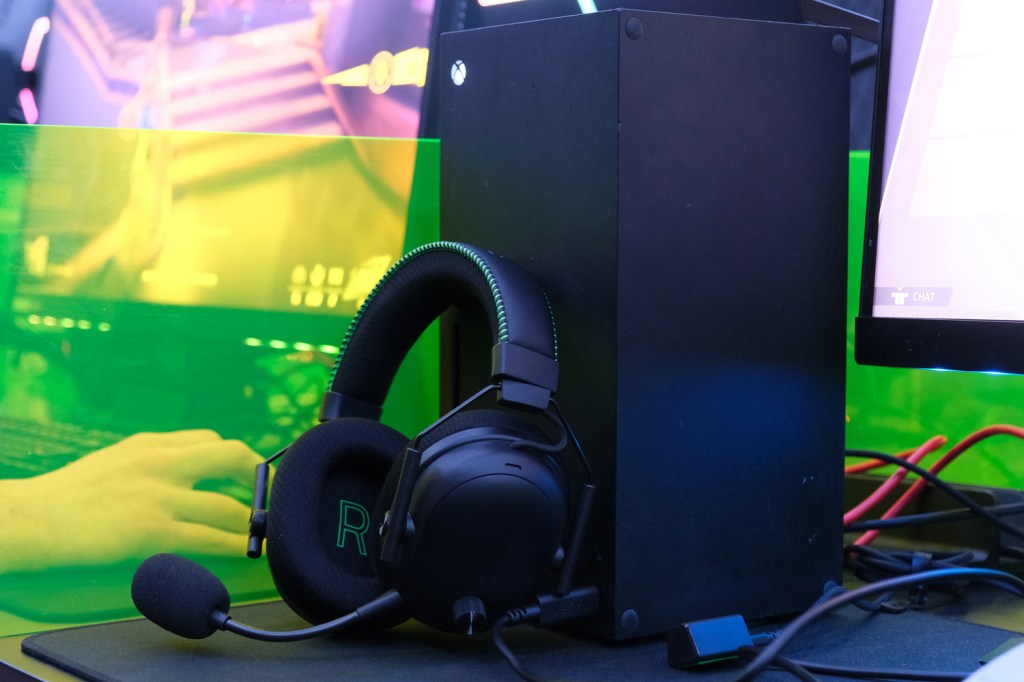
Tech made with professional gamers in mind can sometimes be a little too focused, deleting features that appealed to the wider fanbase in order to earn a spot on an esports stage. The Blackshark V3 Pro treads the line perfectly, still prioritising the comfort and sound quality that made the last one so popular but adding some welcome extra functionality. Noise cancelling and simultaneous audio make it a much more versatile headset, and a more multi-platform one to boot.
While the speaker drivers and microphone are a definite step up, though, they come at quite the premium. Going even further upmarket than the last-gen V2 Pro was a bold move by Razer; not everyone will be able to justify the Pro’s asking price when the regular V3 is $100/£100 cheaper and has an otherwise very similar feature set.
But if you want Razer’s best sound, this is undoubtedly it.
Stuff Says…
This ever-popular gaming headset is even more capable in its third generation. The Blackshark V3 Pro sounds stellar, has great connectivity, and adds effective ANC to the mix.
Pros
Familiar design is as comfortable as ever, while still evolving functionality
Punchy and precise audio meets crystal clear mic quality
Wired connections make a welcome return for those who need them
Cons
No high quality Bluetooth codecs
You pay a premium for the uprated speaker drivers and mic
Razer Blackshark V3 Pro technical specifications
| Drivers | 50mm dynamic |
| ANC | Yes |
| Connectivity | USB-C, 2.4GHz wireless, Bluetooth, 3.5mm |
| Codecs supported | AAC, SBC |
| Battery life | Up to 70 hours (PC) Up to 48 hours (Xbox/Playstation) |
| Weight | 367g |



